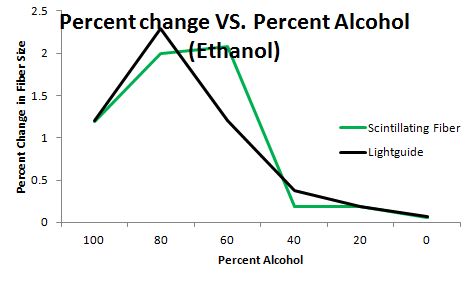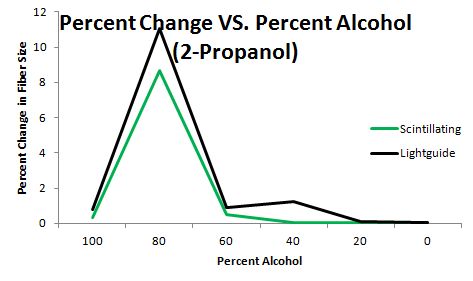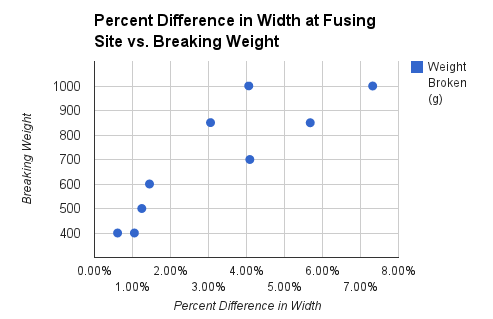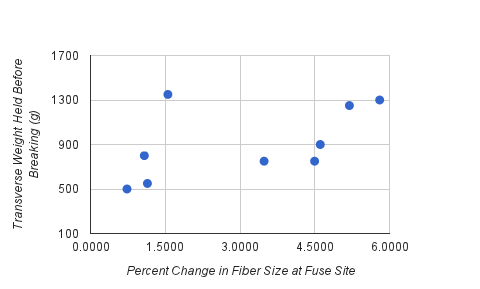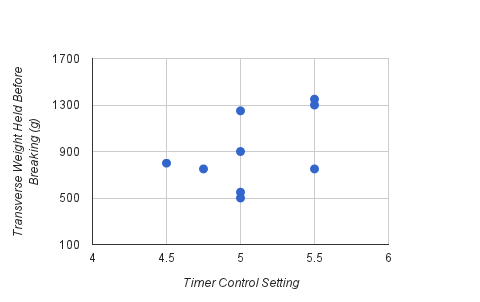Difference between revisions of "Independent Study Final"
m |
|||
| Line 29: | Line 29: | ||
==Heat Test== | ==Heat Test== | ||
| + | For this experiment, we were testing to see if the fibers could withstand various temperatures. I cut 4-1cm light guides and 4-1cm scintillating fibers. I measured their lengths and widths. The fibers were tested under 4 conditions: 180 deg Fahrenheit with distilled water, 150 deg F with distilled, 180 deg F with tap, and 150 deg F with tap. | ||
| + | |||
| + | On Monday, April 29th, the 150 degree F tap and distilled fibers were placed on a hot plate and set for approximately 50 hours. They were then removed from the hot plate and set to cool in a cabinet. The 180 degree F tap and distilled water was then placed on the hot plate on Wednesday, May 1st and left for approximately 50 hours. | ||
Revision as of 15:14, 4 May 2013
This semester I working with Ann Marie in 405 for 2 hours a week for a 1-credit Independent Study (PHYS 4099).
By working in the lab with Ann Marie, I have learned a lot about the Tagger Microscope Construction project for Jefferson Lab. And my work regarding the project has been mostly testing the scintillating fibers and light guides during and after the fusing process. After covering the basic tasks of cutting and measuring fibers, I assisted Ann Marie in taking the data for the Alcohol Test, Strength Test, and Heat Test.
Alcohol Test
In this experiment, 10 Scintillating Fibers and 10 Light Guides were placed in varying solutions of either isopropyl alcohol or ethanol. Each fiber was cut and measured length-wise and width-wise before and after sitting in solution. The masses of the fibers were also recorded before and after.
Below are the graphs Ann Marie created. They show the percent change in fiber size vs. concentration of the solution (ethanol and isopropyl alcohol respectively). It is clear that some sort of chemical reaction or corroding effect is occurring when the fibers were set in 60% and 80% ethanol and 80% isopropyl. It is also worth noting that when measuring the fibers that had set in the previous solutions, the cladding of the fibers were very clearly coming off of the fibers. This means that if ever it was needed to clean the fibers, either a 100% solution of ethanol or 100% distilled water would probably be the safest to use without causing damage to the fibers.
Strength Test
For the Strength Test, Ann Marie had fused together 11 scintillating fibers to 11 light guides and tested their strength by hanging a mass from their fused joint. After successfully breaking 10 of the joined fiber/guides, it appeared as though the strongest fibers were the fibers that had the greatest cross sectional widths at the fusing joints, as suggested by the graph below.
However, Ann Marie then conducted a second strength test in order to test if the fusing joints size were a proper indicator of the fusing. This time she recorded the time and amount of pressure used during the fusing process. Again, she broke the fibers using the same method. This test showed that there is not a correlation between fusing site width and fused fiber strength. It also suggests that there is not a correlation between Time Control during fusing and resulting fiber strength.
Strength Test 2 Drive Document
Heat Test
For this experiment, we were testing to see if the fibers could withstand various temperatures. I cut 4-1cm light guides and 4-1cm scintillating fibers. I measured their lengths and widths. The fibers were tested under 4 conditions: 180 deg Fahrenheit with distilled water, 150 deg F with distilled, 180 deg F with tap, and 150 deg F with tap.
On Monday, April 29th, the 150 degree F tap and distilled fibers were placed on a hot plate and set for approximately 50 hours. They were then removed from the hot plate and set to cool in a cabinet. The 180 degree F tap and distilled water was then placed on the hot plate on Wednesday, May 1st and left for approximately 50 hours.
